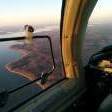Reduced Power to Increase Range in Vintage Mooney?
-
Members Online
- Stealth Mooney
- Justin Schmidt
- alextstone
- Denis Mexted
- Jim Peace
- bigmo
- Z W
- Daily
- FoxMike
- Jetdriver
- Hangar_46
- Mooney in Oz
- Twing207
- KernalSanderz
- Hradec
- Peter T
- exM20K
- Echo
- Skyland
- KSMooniac
- Scooter
- theanswriz42
- kaba
- MikeOH
- Taz
- Crawfish
- onegreen
- redbaron1982
- teethdoc
- Brian Coate
- Jeff Uphoff
- Planegary
- 1980Mooney
- DonMuncy
- pirate
- BeachLifeMoon
- takair
- Sabremech
- Niko182
- Culver LFA


Recommended Posts
Join the conversation
You can post now and register later. If you have an account, sign in now to post with your account.